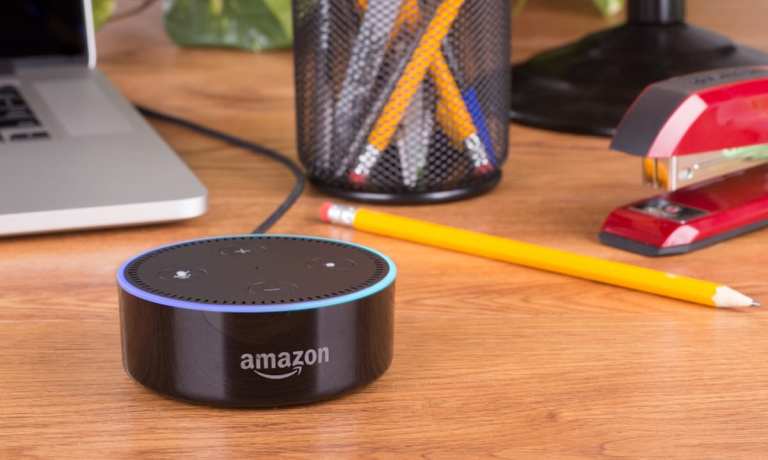Amazon’s Alexa Bases Updates On User Behavior

Amazon has released Alexa’s latest round of updates and features designed to make the voice assistant more useful, more helpful and a bit more proactive.
Since 2018, Alexa has been able to develop “hunches” based on its observations of its users’ habits. To act on a hunch — say, to lower the thermostat at a certain time of the evening — Alexa would have to first ask permission. With the latest update, when consumers have hunches enabled, Alexa will simply go ahead and do whatever it is, without seeking permission. According to Amazon, users can select what types of hunches Alexa can complete on its own — although at this point, exactly how much a user can customize this feature remains unknown.
A more independent Alexa, however, is just the start of the new features being rolled out for 2021. Alexa is now also able to monitor the power usage on connected devices. Users can monitor that usage and get suggestions from Amazon on how to best control their energy expenditures via the new energy dashboard.
Along with the new Alexa capabilities, Amazon is also rolling out its Guard Plus home security subscription service. For $4.99 per month, Guard Plus will turn Alexa into a security guard of sorts, which will alert its owner if it picks up on certain types of sounds in the home. It also connects users to human agents who can call emergency services on their behalf, much like a traditional security system.
Market watchers have already begun listing additional features they want to see by the end of the year, according to reports. For example, many are seeking more information on how Amazon uses Alexa to collect consumer data, and how much control users have over how much data is harvested, which has been a long-running concern.
“Amazon has been under pressure to improve the privacy provisions of its products, and it has been responding with new options to automatically delete your history,” noted Avi Greengart, lead analyst at Techsponential. “I expect that this trend will continue – both in terms of new features and more on-device AI that requires less data to be stored in the cloud, [as well as] greater visibility into the privacy protections Amazon has actually implemented but consumers don’t know about.”
Also on the agenda, according to Greengart, are improvements to Alexa’s speech recognition, which has been a persistent pain point for the voice assistant since its launch. Amazon announced educational and programming improvements to the voice recognition tech back in October, he noted, and those improvements are expected to be implemented throughout 2021.
Improvement is coming, according to PYMNTS data, just as consumers’ hunger for connected voice assistants is growing and expanding. The connected consumer has moved beyond just talking to a voice-activated AI through a smart speaker or asking Alexa for a weather report. According to the data, consumers now shop for retail products from home at nearly double the rate they did a year ago, while three times as many have relocated their grocery shopping from the store to their homes. And voice assistants are showing up to assist with a growing number of those home purchases — 42 percent more often than they did in 2018 and 10 percent more than they did in 2019.
Moreover, the physical outlay of the homes themselves are changing — they no longer contain a point or two of connection to digital interfaces like voice, but instead have digital touchpoints sprinkled nearly everywhere. Home offices are rapidly becoming the primary professional workspace, as 38 percent of American adults report working full-time jobs from home. Another 45 percent say they’re working part-time from home. Workers are also shopping during the workday, as 6.5 percent report making purchases while working from home.
And not just from their desks — consumers are now doing a lot of shopping and managing their financial lives from everywhere in their homes. Seventeen percent reported that they’d shopped while watching television, roughly 14 percent reported having made a purchase via mobile during the last 24 hours, and 6.7 percent said they’d made a voice-assisted purchase in the past day.
And the trend, while broad, is more clearly seen among millennials and bridge millennial consumers — the demographic widely forecast to be driving the real estate market for the next few decades. Digital-native millennials and bridge millennials come with a fair amount of disposable income — $95,000 a year on average — and built-in enthusiasm for using connected devices. (They own roughly six on average.)
The definition of “home” has changed over the last year, from the place where consumers lay their heads to the place where they do just about everything. As Ecobee CEO Stuart Lombard told Karen Webster in an interview, connection creates the possibility to use technology to create the “home oasis,” one smart device at a time.
As the technology is evolving, consumer enthusiasm is expanding. It seems more digital home oases are on the horizon for 2021.
Read More On AI:
- AI Sparks a Creative Revolution in Business, With an Unexpected Twist
- Intellicheck CEO: Fraudsters Using AT&T’s Call Log Breach to Build Consumer Profiles
- Meta Suspends AI Tools in Brazil Amid Privacy Policy Dispute
- Equifax: Adoption of Cloud, AI Technologies Drive Company’s ‘Next Chapter’